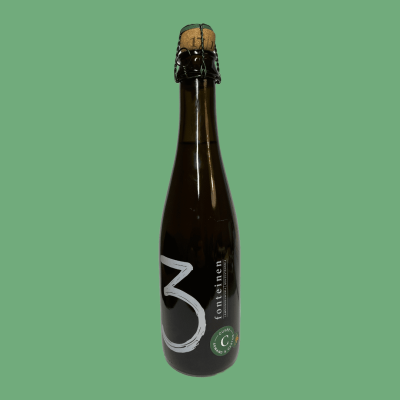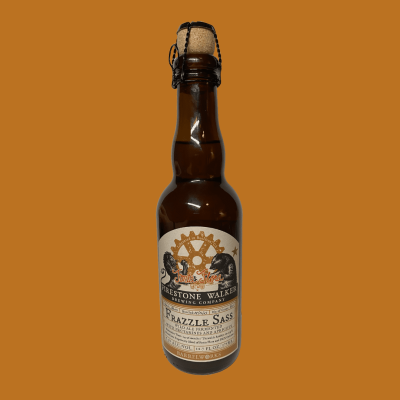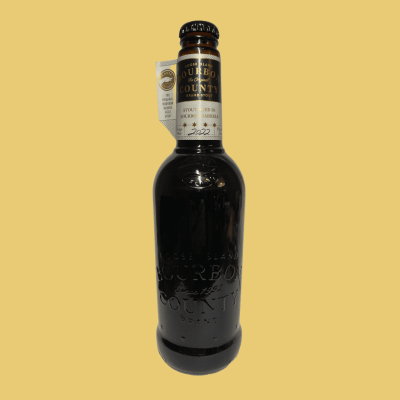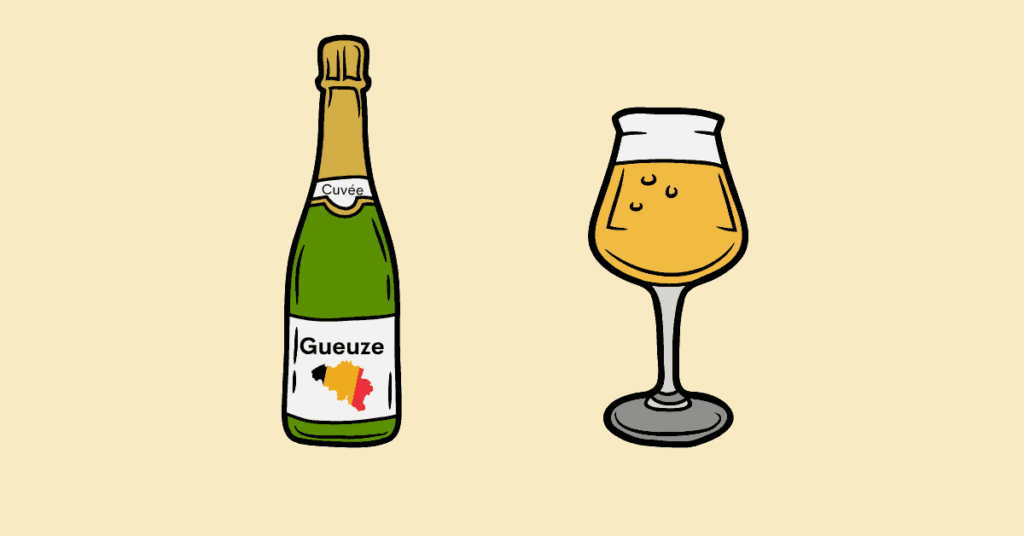In the late 2010s, Brut IPA was the IPA de jour. Having an extremely dry finish from the help of exogenous enzymes added in the brewing process to increase the fermentability of its wort, Brut IPAs are pale, highly carbonated beers somewhat reminiscent of dry sparkling wines.
While many breweries were suddenly making the style in the late 2010s, the style just as quickly diminished in popularity, making it a somewhat rare find on the shelves in 2023.
While short-lived as a style, Brut IPA made an interesting case that beer with the right qualities could be a replacement for sparkling wines. This article recommends three other beer styles that could replace sparkling wine at the dinner table or any special occasion.
Table of Contents
Criteria for Beer Selection
When deciding what beer styles could replace sparkling wines, the following factors were considered:
Food pairing
The ability of a beer style to pair with various foods is an important consideration when looking for a sparkling wine replacement. The curated list below considers commonly paired foods with sparkling wines and finds beers that also pair well with these foods.
Terrior
While wine is famous for being a product of the environment in which the grapes are grown, and the wine is fermented, so-called terrior, beer is generally the opposite. Beer is typically crafted with malted barley, hops, and yeast selected by the brewer and brewed and fermented in a process under the brewer’s control, resulting in beer that is consistent from batch to batch.
With that said, some beers are fermented with microorganisms naturally present in the air at the brewery (most notably some Belgian beers), giving these beers an element of terrior from the unique mix of fermentation organisms.
Similarly, some beers fermented or aged in wood have flavor profiles affected by the specific mix of microorganisms in the vessel’s wood, resulting in variation from barrel to barrel or foeder to foeder within a brewery.
Vintage
Some wines are capable of being stored and valued for their vintage. Generally, beer is meant to be consumed less than one year after production. However, some beer styles can be aged and, in some cases, become even better after aging. Beers that age well are sometimes labeled with the year of production, giving them an element of vintage and creating differentiation of the same beer that has been aged for different amounts of time.
Cork-finished beer
One element of sparkling wine that makes it special is its presentation, which in part includes a cork and cage-finished bottle. While not all beers on this list are cork-finished, presentation is a key factor in the beer recommendations on this list.
Gueuze
Made from the blend of multiple years of Lambic and refermented in the bottle, Gueuze is a tart, complex, and highly carbonated Belgian beer.
Some basics about the underlying beer style blended to make Gueuze, called Lambic, are necessary to understand Gueuze. Lambic is made from primarily malted barley (like most beers) and a sizeable portion of unmalted wheat. After the brewhouse, the wort goes to a coolship, a large, flat metal vessel with a high surface area that enables the wort to cool and to be inoculated with the microorganisms in the air that will ferment the beer. The resulting mix of microorganisms gives the beer a unique terrior-like quality, where the exact blend of organisms depends on the brewery’s microclimate. The beer is then fermented in barrels or foeders, developing a complex flavor from its mixed culture fermentation, and aging on wood can go for as long as years. At this stage, the resulting beer is Lambic.
Brewers will taste and blend various ages of Lambics, producing Gueuze, which is bottled and carbonates through refermentation in the bottle. Gueuze makes an interesting replacement for sparkling wine because:
- It has terrior from the microorganisms that ferment the beer. Each blending will be unique, making it an exciting style to try multiple bottles from different blends.
- The beer has vintage. Often Gueuze will be labeled with a year of production and subtly change over time.
- Gueuze is generally highly carbonated and sealed with a cork and cage, much like sparkling wine.
- There are typically variants with fruit added, providing a range of sweetness levels and pairing possibilities.

Beer to Try: 3 Fonteinen Oude Gueuze Cuvée Armand & Gaston
Belgian brewer 3 Fonteinen makes a range of high-quality gueuzes readily available in specialty beer shops in the United States. The 3 Fonteinen Oude Gueuze Cuvée Armand & Gaston pours as an opaque orange and is more restrained in carbonation than many gueuzes. The beer has a pleasant aroma of peach and a funky character usually associated with Brettanomyces. The beer’s flavor profile is balanced, with lots of mixed culture fermentation character and relatively low acidity for a gueuze.
There is an excellent tour of the 3 Fonteinen brewery by a YouTuber that you can find here if you’d like to learn more about the process they use to make their beers.
Pair it with
Oysters or salads with a citrusy dressing
Fruit-rich desserts with fruited gueuzes
American Wild Ale
Much like Gueuze, American Wild Ales are fermented with a mixed culture of microorganisms beyond just Saccharomyces, from which most beers are made, and many are aged on wood.
However, American Wild Ale is a generic term for basically everything fermented with these non-traditional microorganisms that have previously been considered “wild” microorganism that doesn’t neatly fit into another style guideline. American Wild Ales are often experimental, not strictly following style guidelines, and introducing new ingredients, wood aging methods, and other new methods.
The qualities that make them an interesting substitute for sparkling wines are like that of Gueuze, but usually with an interesting twist.
- Due to the mixed culture fermentations, various wood-aging techniques, and blending of multiple barrels, American Wild Ales have the same batch-to-batch variability and terrior-like quality as spontaneously fermented Belgian beers. However, in the US, the beer is often inoculated with a prepared culture compared to the spontaneous fermentation typical of Gueze (see White Labs Belgian Sour Mix 1, for example). Even if the beer is inoculated and not spontaneously fermented, the aging conditions, methods, and sometimes ingredients will make that beer unique to the producer.
- Many of these beers store well and have vintage.
- Bottles are often cork-finished and make very nice presentation bottles. The method the brewer uses is also part of the story of the beer, often making them interesting conversation pieces.
A huge variety of flavor profiles opens lots of food pairing possibilities.
- Like Gueuze, you can find fruit variants but also beers with added spices, aging on unique wood (for example, former tequila barrels), and the addition of non-standard beer ingredients.

Beer to Try: Firestone Walker Barrelworks Series
Firestone Walker produces wild ales through a series called Barrelworks, which frequently has collaboration beers made with other brewers. For example, Frazzle Sass, a beer made in collaboration with the North Carolina-based brewery Fonta Flora, is a wild ale made with nectarines and apricots. The beer pours a bright golden color and has flavors of stone fruit on the front end, followed by Brettanomyces character and palate-cleansing acidity.
At 10 g/L titratable acidity, the beer is delightfully tart but kept in balance by the fruity elements of the beer.
Pair it with
Varies based on exact beer, but often works well with similar foods to Gueuze
American Imperial Stout
While the other two recommendations on this list are tart, light-bodied ales, the Imperial Stout is an entirely different beer. Characterized by roasty flavor, elevated alcohol content, and full-bodied character, Imperial Stout is a substitute for the sweet sparkling wines that sometimes accompany dessert. Imperial Stouts match up well with strong blue cheeses and sweet, chocolate-heavy desserts. Heavy stouts provide roasty flavors and elevated alcohol that cuts through pungent cheese and slightly burnt astringency and deep chocolate and coffee flavors that balance out a dense chocolate dessert.
Originally an English creation, the American versions of Imperial Stout are bolder in flavor profile. Many can be found in variants aged in wood or with other ingredients added. Some attributes that make Imperial Stout a good substitute for sweet sparkling dessert wines are listed below.
- Imperial Stouts offer a different direction for pairing rich, chocolate desserts than sweet wines. While the wines pair sweet with sweet, the Imperial Stout brings roasty character in contrast to the sweetness and chocolate and coffee flavors that are in balance with the dessert.
- Imperial Stouts age well and thus are often labeled with the year of release, giving them vintage. Typically, this style is somewhat “hot” with alcohol flavors right after bottling but mellows over time and sometimes develops mild oxidation flavors or very subtle notes of autolyzed yeast, both of which can add to the complexity of this beer style.
- Many American Imperial Stouts have traditionally come in cork-finished bottles. However, recently there has been a move to nice capped bottles or even, in some cases, cans.

Beer to Try: Goose Island Bourbon County Brand Stout
Goose Island’s Bourbon County Brand Stout is an iconic American Imperial Stout that popularized aging strong beers in bourbon barrels. Full-bodied with bold chocolate and roasty flavors, this beer goes well with rich, chocolatey desserts. This stout is also an excellent beer to age and taste over time and has become more widely available in recent years.
Josh Noel wrote a great book on the history of Goose Island as a brewery, which covers the development and rise of Bourbon County Brand Stout, called Bourbon Barrel Stout and Selling Out: Goose Island, Anheuser-Busch, and How Craft Beer Became Big Business that is worth a read. Another article on this site recommends the best beer books, and this title is one of them.
Pair it with
Rich chocolate desserts
Pungent cheeses, like blue cheese

